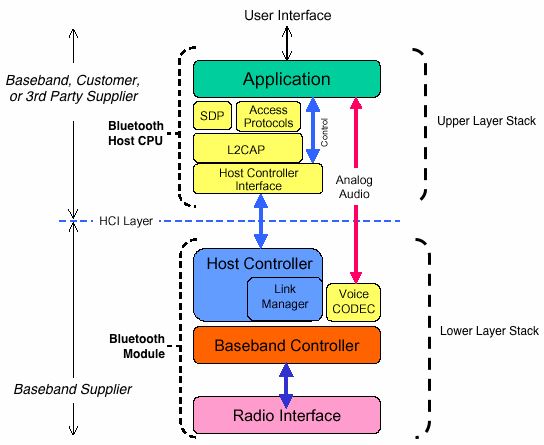Bluetooth is a short-range wireless communication aimed to replace the conventional cables and wires to communicate between fixed or mobile devices. It allows the user to attend calls from their headphones itself. It allows the keyboard and mouse to go wireless. It allows files to be shared over a short distance e.g. ‘Air Drop’. It operates in the unlicensed Industrial, Scientific and Medical (ISM) bands using the Ultra High Frequency (UHF) from 2.402 GHz to 2.480 GHz. It is coined as IEEE 802.15.1 standard and is managed by the Bluetooth Special Interest Group (SIG).
History of Bluetooth
This technology has evolved a long way from connecting mere computer peripherals to powerful industrial and domestic Internet of things (IoT) devices. It was developed to replace the conventional RS-232 cables. It was first envisioned by Jaap Haartsen in 1994 while working for Ericsson in Lund, Sweden.
The first consumer device to use Bluetooth was launched in 1999. Now we have embedded Bluetooth technology on almost all smart devices. The SIG group continues to refine its technology and has now come up with Bluetooth Low Energy (BLE) which with its reduced power consumption feature aims at healthcare and fitness gadgets, applications related to home entertainment and much more.
Working of Bluetooth
Bluetooth devices operate using star topology. All the devices which are connected in this topology forms a piconet which has at most one master device and up to seven active slave devices.

The group of devices which share a radio channel are synchronized by a common clock, where the master provides the synchronizing references. All the devices which are connected in the piconet use a specific frequency hopping pattern which is determined by the master device.
The radio channel or the physical channel is divided into equal slots of time which is used by the Bluetooth devices to transmit packets of data on the channel. The physical channel is also used to transport synchronous, asynchronous and broadcast traffic.
The synchronous traffic can carry audio data, while asynchronous traffic carries other form of data like printing of a file or synchronizing the calendar between your mobile phone and PC. The technology uses device inquiry and inquiry scan to listen to the devices which are actively inquiring. After the inquiry is received by the scanning device, it sends a response to the inquiring device to send information about the nature of the inquiring device.
Bluetooth Scatternet
It is a ad-hoc network of devices consisting of two or more piconets. A scatternet can be formed by selecting one member of each piconet (either master or slave) to become a slave member in the scatternet. The scatternet can have 255 parked nodes apart from seven active slaves. The slaves perform only when master device instructs them. The slaves cannot communicate between each other on their own.
Bluetooth protocol stack
A bluetooth stack comprises of two well-defined layers of functionality. These layers comprise of lower level hardware-based radio system and an upper level software stack.

The lower layer describes the core specifications of how bluetooth works. The lowest or the base radio layer describes the physical characteristics of the transceiver. It also performs modulation /demodulation of the signal received or transmitted over the radio frequencies. The transmission band is splitted into 79 channels and uses fast frequency hopping for security.
The layer above the radio module is the baseband and link controller/link manager protocol (LMP). This layer is responsible for formatting the data for transmission to and from the radio. It also defines the flow control on the link, timing and framing of packets etc. It is the link manager controller which receives the commands from the Host Controller Interface (HCI) and translates them for the lower layers. It also sees and manages the slaves in the piconet, manages connection and provides for power management.
The upper stack layers build the profile specifications for different devices to communicate with the core technology. The HCI is the interface between the upper software part and the hardware or the device driver. The L2CAP (Logical Link Control and Adaption Protocol) keeps track of the data flow.
The Service Discovery Protocol (SDP) provides the interface to the link controller and also manages the interoperability between different Bluetooth devices.
Author
Anupama kumari
M.Tech (VLSI Design and Embedded system)
BS Abdur Rahman University
